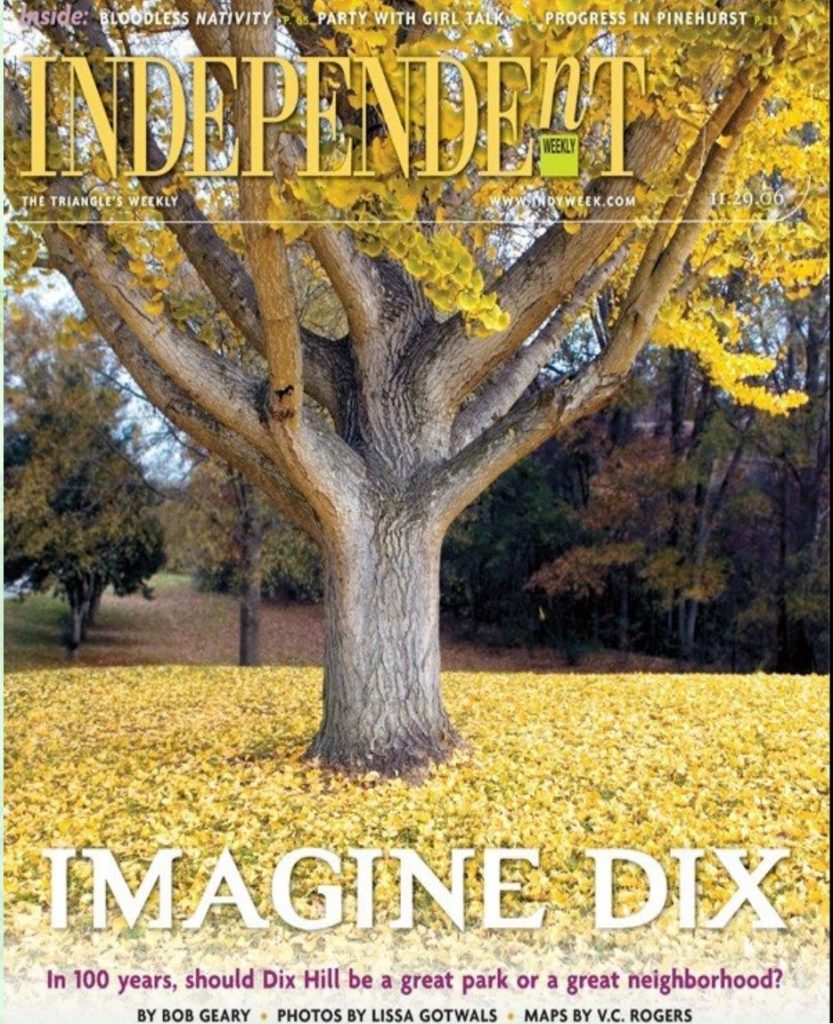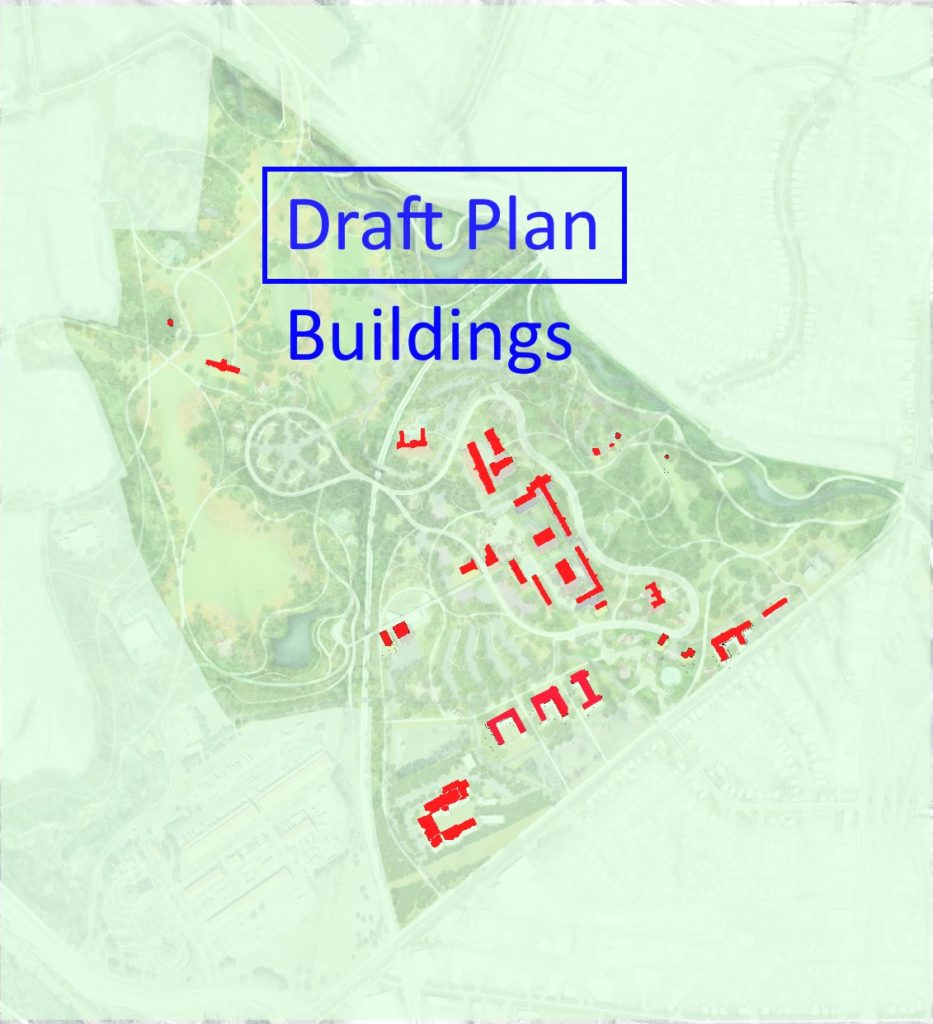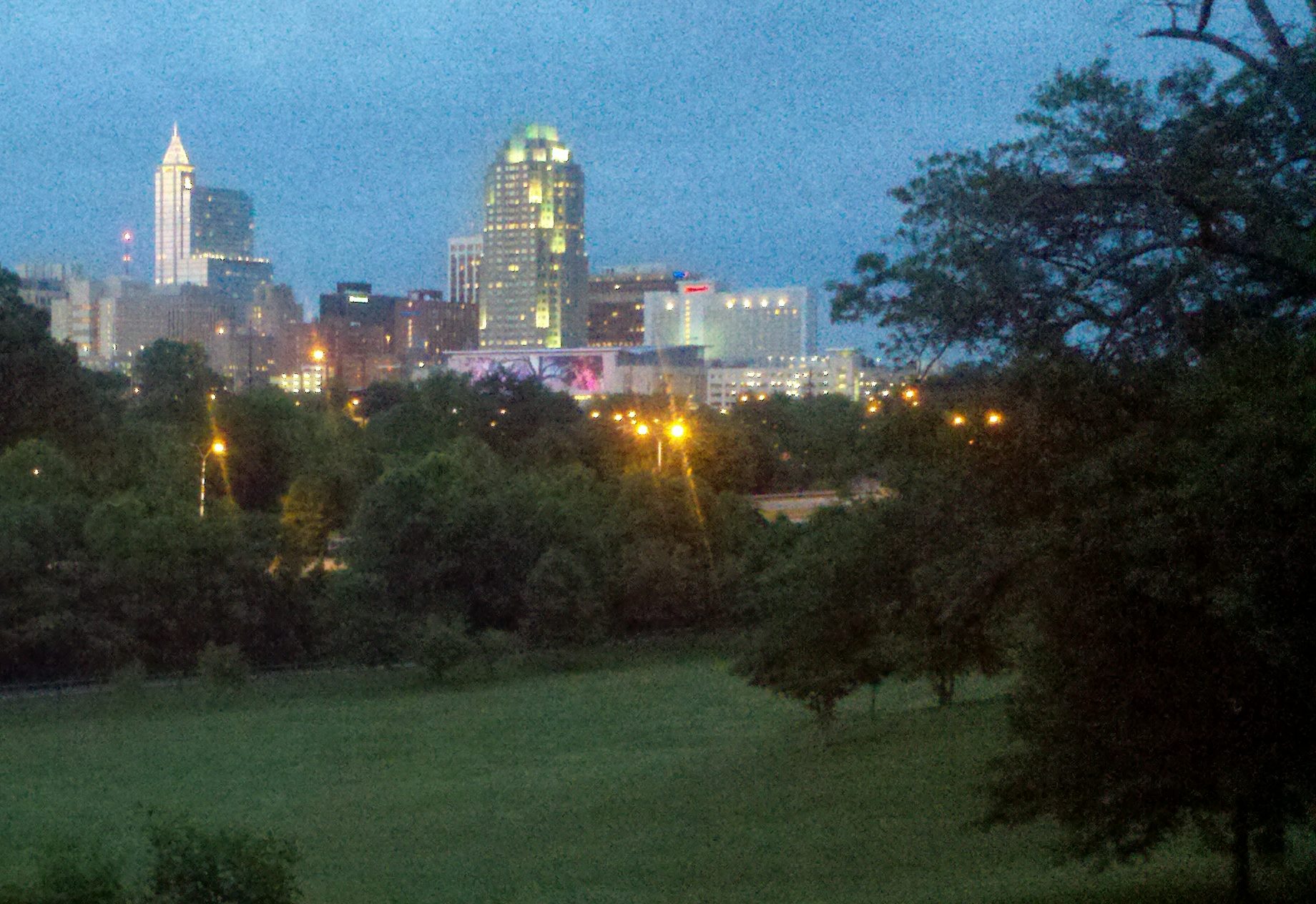
I’d like to take us back to a time 15 years ago, to when Raleigh was just starting to show up on all the Top 10 lists. The best places to live. The best places to play, and to BE. We were going to reopen Fayetteville Street—remember that? We were nothing if not optimistic.
And so we imagined that the 306-acre Dix Hospital site, when vacated by the state, could become a great destination park for our city and the region. That was the shared vision of Dix 306, the Friends of Dorothea Dix Park, and the Dix Visionaries.
But then a debate ensued about whether we could afford it. You’ll recall that ULI, an arm of the development industry, advised that the middle of Dix should become, “highest and best,” a mixed-use center. Think North Hills.
To a group like ULI, not to develop Dix was to waste it.
So thousands of us pushed back with our Dix306 signs and our determination that this prized, historic landscape not be lost to a welter of the usual shopping-mall stuff. Yes, we said, Raleigh can afford a great park. And not just afford it. We said that by having it—by creating a great green park in our soon-to-be high-density city—we’d help Raleigh sustain its appeal as a place for business and newcomers, but still be livable, still be that top-10 place to play as well as work. It’s all of a piece. Great cities have great parks. If not, they aren’t great.
We were upbeat then.
But 15 years later, I fear we’ve misplaced that optimism, and let our vision be clouded by doubts. What if we can’t afford this now 308-acre park?I say this knowing that the Dix Executive Committee has heard some scary guesstimates of how much this park could cost, not to build, but on an annual basis to maintain and operate. Our response: Don’t be scared. Do insist on the facts. What Dix will cost, and why, and for what, is still a mystery.

But here’s some facts we do have.
Raleigh’s park system now comprises 10,000 acres of land in 200 parks. The cost to maintain and operate them all, the entire operating budget for our Parks and Recreation Department, is $50 million a year.
Now compare that to the scary statistic you’ve heard that Dix, at 308 acres, could cost $8 million a year for operations and maintenance, or maybe $14 million, or at one meeting I heard $22 million.
How is that 10,000 acres can be operated for $50 million a year; but 308 acres might cost $22 million?
The answer is, it won’t. Or it shouldn’t. Not unless we build the wrong Dix park.
If, however, that $22 million figure is even remotely correct, it’s because the current draft plan calls for keeping, by my count, 31 of the old Dix hospital buildings, and as everyone agrees, they’re in terrible shape. It’s not at all clear how keeping them will enhance our park. What it will do, however, is drive up our costs as we struggle to renovate, or even just mothball the lot of them.
These 31 buildings, by the way, are not small. Altogether, they contain almost 700,000 square feet of building space, according to the plan. Which for purposes of comparison is about as much as the buildings in Cameron Village shopping center, also 700,000 square feet.
Now I dare say that when we all worked and staked out those Dix306 signs with the vision of creating a great park on Dix Hill, we weren’t thinking that it ought to have a Cameron Village-sized shopping mall up on the ridge.
But that seems to be what this plan has in store.

Mayor, members of Council, this draft plan suggests that these buildings—some of them, anyway—could be renovated at great cost to use as a hotel, restaurants, a food court, an events hall, a brewery, shops, office space and the kind of stuff that we already have in abundant supply elsewhere in Raleigh.
But wait, it gets worse. Embedded in the plan is the idea that, to finance our hotel and our shopping mall, we should also “reserve” land inside the park, over by Lake Wheeler Road, for other private development—probably pricey condos, is what we heard at various public meetings, because pricy condos would be “revenue generators” for this suddenly very costly park.
Ladies and gentlemen, this is the tail wagging the dog, a perpetual chase for revenues to catch up with costs we never should’ve incurred in the first place.
We must not cannibalize Dix Park in order to afford it.
But if, on the other hand, we build a park consistent with the Dix legacy, one that preserves the landscape of this beautiful place and retains only the buildings that enhance it, our overhead will be far less, and our investment repaid again and again, year after year, by the multitudes of people who will stroll its hills, ride its paths, and ramble through the Valley and the Big Field on over to the Farmers Market, or down to Rocky Branch.
Let’s go ahead with Phase A. It’s bold. It will take 10 years to achieve.
While we’re working on that, we can reconsider the recommendations in Phase B and C and D. No need to adopt them now. Remember, nothing can happen with the buildings until the state hands them over to us, and that’s not expected to happen until 2025 or later.
We have time to get this right. We have forever, frankly, to get this right.
If we take our time, we can afford to create the great park we envisioned a decade ago. What will cost us dearly, though, is if we do something less.
Thank you.
